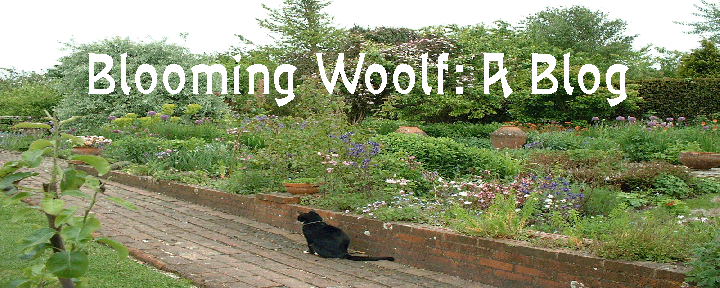I just thought I’d add a few observations and images to Vara and Paula’s blogs on the Woolf conference recently held at Georgetown College in Kentucky.
While this conference was small, it was very intimate and coherent. You really got to see everyone and catch up, and almost all the sessions were directly on topic, so it was even more exhilarating than usual to be constantly connecting ideas. There was a lot of quoting each other from session to session.
I particularly enjoyed Judith Allen’s provocative talk the first day on wild grasses in Woolf, which gave me a lot to think about, especially that image of paving over the grasses with grey stone. And I learned more than I may have really wanted to know about Rupert Brooke from Gill Lowe’s fascinating account of his wild swimming behavior. Georgia Johnston, as always, really made me think differently – in this case about “Lappin and Lappinova.” I really appreciated the thumbnail history of eco-criticism that Bonnie Kime Scott gave us, and like many appreciated the fact that she tried (as always) to be fully inclusive and remember back through ALL the mothers. (Picture below, from left: Judith, Suzanne, Marty, Gill, and Kathryn)
On Friday I went to some really stellar sessions. Of course I was partial to “Painting Woolf” since my friend Marty Epp-Carter was showing the results of a collaborative Clemson class on Graphic design—some stunning student books covers for “Kew Gardens.” But Suzanne Bellamy’s meditation on climate change as a driver of identity transformation in Orlando gave me something new to think about. As did Cara Lewis’s brilliant talk on the unframed paintings in To the Lighthouse—perhaps the single best talk of the whole conference as it gave me a significant new way to look at a novel that has already received a pretty comprehensive academic treatment.
As always, I loved listening to Cecil Woolf’s memories of Leonard and Virginia—I never get tired of the authenticity and humane humor of his stories.
As always, I loved listening to Cecil Woolf’s memories of Leonard and Virginia—I never get tired of the authenticity and humane humor of his stories.
But for me the highlight of Saturday evening was Suzanne’s tribute to Isota Tucker-Epes, the fascinating painter who became such an inspiring presence at a handful of memorable Woolf conferences.
Thanks to Isota’s generosity, Suzanne was able to show us slides of the complete series of ten paintings on Woolf as well as the paintings she and Isota did as projects for conferences—a catalogue raisonné that few of us had ever seen before. Besides being a visual treat, the presentation reminded us of the bonds of friendship that are perhaps the most abiding reward of attending these annual conferences. The Image below is of a "Marriage of Opposites" a rare painting that few of us had ever seen (thanks to Suzanne for providing image)
 At the banquet I was much amused by the animated version of the Great Frost episode in Orlando—another treasure recovered by the intrepid archive-explorer Leslie Hankins. And like many I was delighted by the return of the Woolf Players. These readings of Woolf’s own words often are a kind of high point in the conference for me, a reminder of why we are all here together. Judith Allen began the reading with an excerpt from a lovely article about reading aloud which you can read here. (Photo to the right is Jean Moorcroft Wilson Woolf, and Jane Goldman, who will be hosting next year's conference at Glasgow)
At the banquet I was much amused by the animated version of the Great Frost episode in Orlando—another treasure recovered by the intrepid archive-explorer Leslie Hankins. And like many I was delighted by the return of the Woolf Players. These readings of Woolf’s own words often are a kind of high point in the conference for me, a reminder of why we are all here together. Judith Allen began the reading with an excerpt from a lovely article about reading aloud which you can read here. (Photo to the right is Jean Moorcroft Wilson Woolf, and Jane Goldman, who will be hosting next year's conference at Glasgow)
After quite a lively end to the evening downtown at a local pub where we pulled, I think, 5 tables into a long L of babbling Woolfians, I was reluctant to pull myself out of bed for the 8:30 AM sessions on Sunday. But I was rewarded by a lively exchange on “Animals, Social Deviance, and Evolution” in which Elizabeth Mills and Sarah Henning -Stout made me think much more coherently about birds on Woolf, and Jeannie Dubino taught me to read Flush with a serious attention to the heritage of Spaniels.
Diana Swanson’s concluding plenary in the art gallery gave us all another chance to look at the show collected for the conference, without the distraction of food, and was the perfect ending to the conference, reminding us of the ways in which teaching Woolf can be part of a larger effort to help restore balance between the human and natural world.




